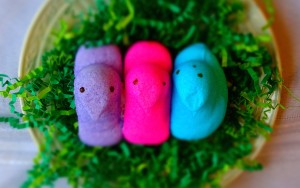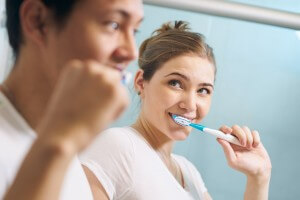
According to CNBC, Easter barely edged out Halloween in 2016 as the most candy-ful holiday in the U.S., with $823 million in sales. But if you’re a parent, all the numbers boil down to one thing – your little one probably has jellybeans and marshmallow Peeps stuck in their tiny teeth this week.
Easter is a great opportunity to teach or reinforce good brushing habits with your kids. It’s also good time to establish expectations about consuming candy and sweets. This is important for not just their dental health, but also for overall nutrition and healthy eating habits.
Too Early?
Parents can begin brushing from the appearance of baby’s first teeth. You should continue to brush and/or supervise the child’s daily mouth care routine until they are ready for elementary school. The American Dental Association recommends that by the time your child can tie their own shoes, they should also be able to brush and floss their teeth by themselves.
Some standard guidelines for brushing kids’ teeth;
- Children should use a pea-sized amount of toothpaste and not swallow it
- Clean all tooth surfaces – inside, outside, and tops – all the way to the gum line
- Brush gently, back and forth
- Don’t forget to brush that tongue!
You can begin flossing and letting children help brush their own teeth at around age four. Of course, you should supervise and help form healthy brushing habits from the beginning. Additionally, candy-heavy holidays like Easter, Halloween and Christmas are the perfect opportunity to teach kids where, when and how much candy its appropriate to consume.
If you need additional tips or help teaching your kids how to brush their teeth, let us know in the message section when you schedule your next check-up.
